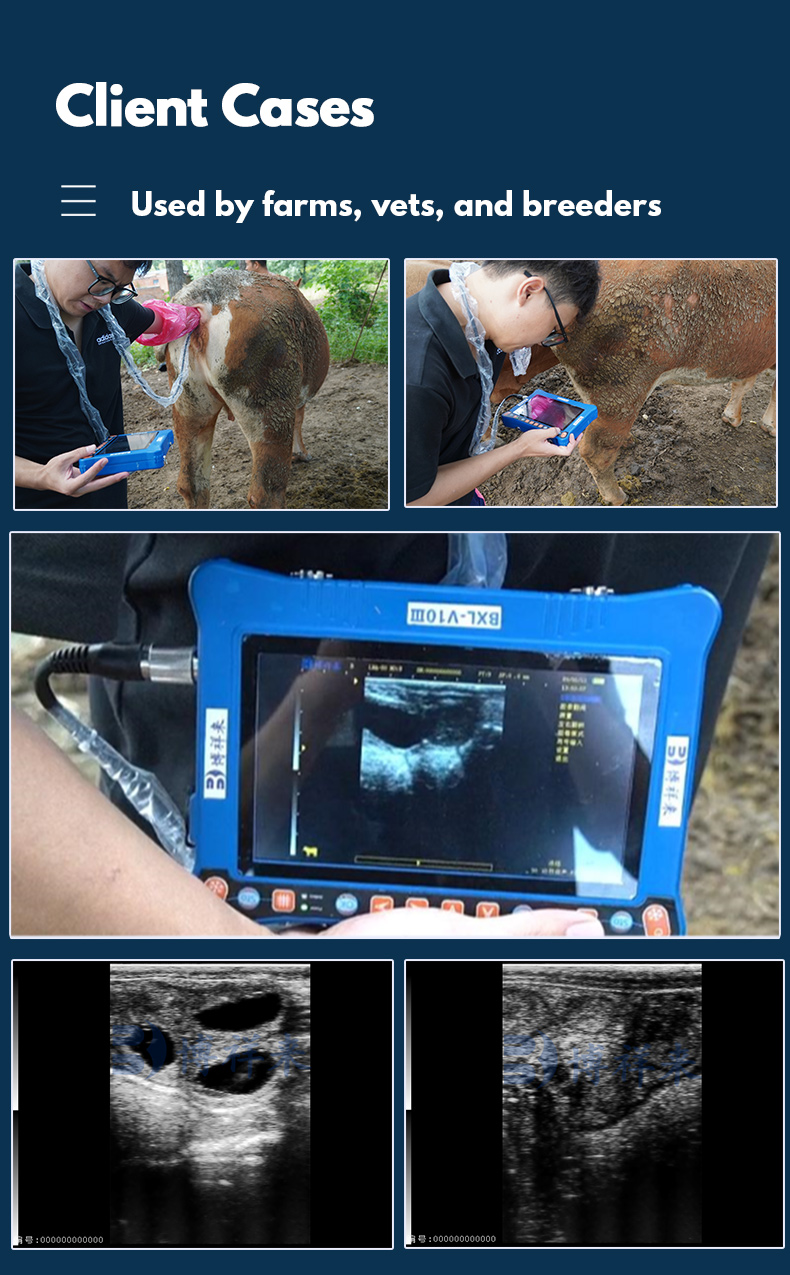Ultrasound Pregnancy Tools Identifying Delayed Implantation in Seasonal Breeders
For livestock farmers, especially those managing seasonal breeders like sheep, goats, and certain wild ungulates, understanding reproductive timing is critical to ensure optimal fertility rates, healthy offspring, and economic success. Among the many tools available to monitor reproduction, ultrasonography—particularly B-mode ultrasound—stands out as a highly reliable, non-invasive, and informative method for tracking pregnancy status, identifying anomalies, and crucially, detecting delayed implantation. In this article, I will explore how ultrasound technology is used to identify delayed implantation in seasonal breeders, drawing on international research and practical field experience.
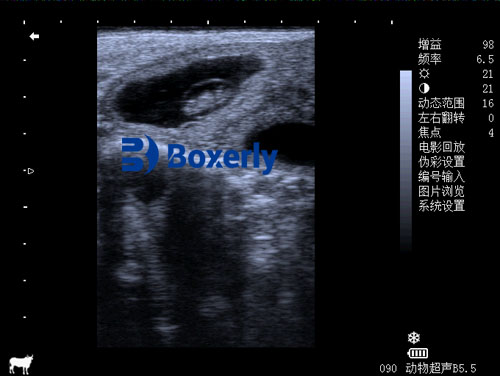
Understanding Delayed Implantation in Seasonal Breeders
The Reproductive Challenge of Seasonal Breeders
Seasonal breeders synchronize their reproductive cycles with environmental cues such as photoperiod, temperature, and resource availability. This adaptive strategy ensures that births occur during times of optimal food supply and favorable weather conditions. However, not all fertilized eggs implant immediately after conception. In many seasonal breeders, delayed implantation (also called embryonic diapause) occurs as a natural physiological mechanism that temporarily suspends embryonic development.
Delayed implantation allows the embryo to pause at the blastocyst stage before attaching to the uterine wall. This ensures that the fetus only develops when conditions are ideal for survival. While this is an evolutionary advantage, for modern livestock management, delayed implantation introduces uncertainty regarding pregnancy status, making accurate monitoring essential.
Why Identifying Delayed Implantation Matters
From a farm management perspective, knowing the exact reproductive status of each female is vital. Delayed implantation can:
-
Disrupt breeding schedules
-
Cause confusion in pregnancy diagnosis
-
Impact nutritional planning and herd rotation
-
Lead to misjudgment of reproductive success rates
Thus, precise and timely detection using ultrasound tools helps farmers make informed decisions about feeding, grouping, and predicting parturition dates.
The Role of Ultrasound in Monitoring Pregnancy
How Ultrasound Works
Ultrasound uses high-frequency sound waves to create real-time images of internal structures. In reproductive management, it allows direct visualization of the uterus, ovaries, corpus luteum, and developing embryo or fetus. The most commonly used modality in veterinary practice is B-mode (brightness mode) ultrasound, which provides two-dimensional grayscale images that can reveal subtle changes during early pregnancy.
Key Benefits of Ultrasound for Detecting Delayed Implantation
-
Non-invasive and safe: No harm to the animal or fetus.
-
Real-time observation: Immediate assessment of uterine contents.
-
Quantitative measurements: Fetal size, uterine fluid volume, and ovarian structures.
-
Repeated use: Allows serial monitoring over time.
These advantages make ultrasound indispensable for early pregnancy diagnosis and for detecting abnormalities such as delayed implantation.
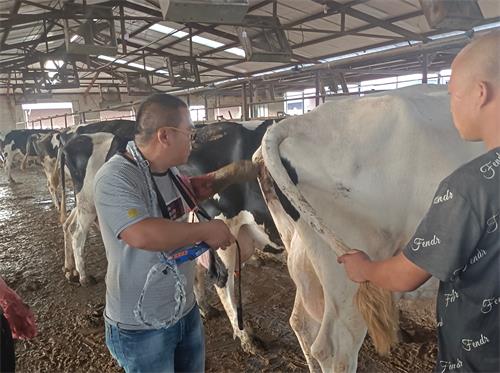
Identifying Delayed Implantation via Ultrasound
Ultrasound Imaging During Normal Early Pregnancy
In a typical pregnancy, B-mode ultrasound can detect pregnancy as early as 18-25 days post-mating in small ruminants. Initially, the gestational sac appears as a small anechoic (black) fluid pocket within the uterine horn. As the embryo develops, echogenic structures such as the embryonic vesicle, heartbeat, and limb buds become visible.
What Delayed Implantation Looks Like on Ultrasound
In cases of delayed implantation:
-
The uterus may appear empty or show only a very small, static fluid-filled cavity.
-
No growth of embryonic structures is observed between successive scans.
-
The corpus luteum may remain active, maintaining progesterone production.
-
The uterine wall may display normal thickness, but lack the typical signs of progressing gestation.
Repeated ultrasounds at weekly intervals allow practitioners to differentiate between a true pregnancy, early resorption, or delayed implantation.
Case Studies from International Research
Sheep and Goats
Studies from Europe and North America have demonstrated the practical use of ultrasound in detecting delayed implantation in small ruminants. According to a 2022 study published in Theriogenology, delayed implantation in sheep was successfully identified through serial ultrasonography, noting static embryonic sacs that failed to develop during expected windows of fetal growth (Mavrogenis et al., 2022).
Deer and Exotic Species
In wildlife management, such as with European roe deer and American mink, delayed implantation is a well-documented phenomenon. Research from Scandinavian wildlife reserves using portable veterinary ultrasound has revealed that roe deer embryos remain dormant for up to four months before resuming development (Aitken et al., 2021). Without ultrasound, such extended diapause could easily be mistaken for infertility.
Cattle and Horses
Although less common in cattle and horses, transient forms of delayed implantation can occur under nutritional or environmental stress. Studies in Australia have shown that Bos indicus cattle subjected to heat stress exhibited signs of delayed embryonic attachment detectable via ultrasound monitoring of the uterine environment (Perry et al., 2023).
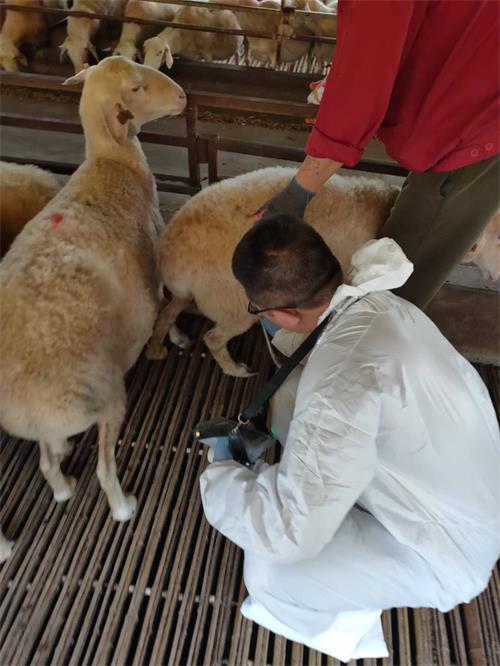
Practical Application on the Farm
Ultrasound Protocol for Detecting Delayed Implantation
On my farm, where we manage both sheep and goats, we have adopted the following protocol:
-
Initial scan at 25-30 days post-mating to check for early signs of pregnancy.
-
Follow-up scans every 7-10 days if pregnancy remains inconclusive.
-
Monitoring corpus luteum activity on ovaries for hormonal support.
-
Comparing fetal size to established growth charts to detect developmental stagnation.
By using this approach, we have been able to accurately identify delayed implantation and adjust our management accordingly, improving reproductive success rates.
Nutritional and Environmental Management
Upon identifying delayed implantation, we often adjust:
-
Photoperiod exposure using artificial lighting for indoor animals.
-
Nutritional plans to support embryo activation.
-
Minimize stress from overcrowding or extreme temperatures.
Studies from New Zealand and the United States have emphasized the importance of these interventions in stimulating resumed embryonic development after diapause (Cushman et al., 2020).
Breed Differences and Genetic Influence
Different breeds demonstrate varying susceptibility to delayed implantation:
-
Dorset and Finnsheep: Lower incidence, rapid implantation.
-
Roe Deer and Red Deer: Long natural diapause periods.
-
Alpine goats: Intermediate risk, highly responsive to photoperiod manipulation.
Genetic selection programs in Europe are increasingly incorporating reproductive resilience markers, aiming to reduce the incidence of implantation delays through breeding strategies (Melle et al., 2023).
Advances in Ultrasound Technology
Portable Devices Revolutionizing On-Farm Diagnosis
Modern portable veterinary ultrasound systems have made in-field reproductive monitoring much more accessible. Lightweight, battery-powered units with high-resolution probes allow for accurate scanning even in remote grazing conditions.
For example, devices such as the BXL-V50 Veterinary Ultrasound Scanner offer:
-
Durability for outdoor use
-
Waterproof design suitable for barn and field conditions
-
Long battery life for extended workdays
-
HD image resolution to clearly identify small embryonic structures
These technological advancements mean that even small-scale farmers can implement professional-level reproductive monitoring without relying solely on laboratory testing.
Limitations and Challenges
While ultrasound is an exceptional tool, certain limitations remain:
-
Operator dependency: Accurate interpretation requires skill and experience.
-
False negatives: Very early stages of delayed implantation can mimic early pregnancy.
-
Cost of equipment: High-end machines may still be financially challenging for some producers.
-
Availability of specialized training: Access to veterinary ultrasonography courses remains limited in some regions.
International organizations such as the World Small Animal Veterinary Association (WSAVA) and the International Embryo Transfer Society (IETS) are working to expand training opportunities for veterinarians and producers alike.
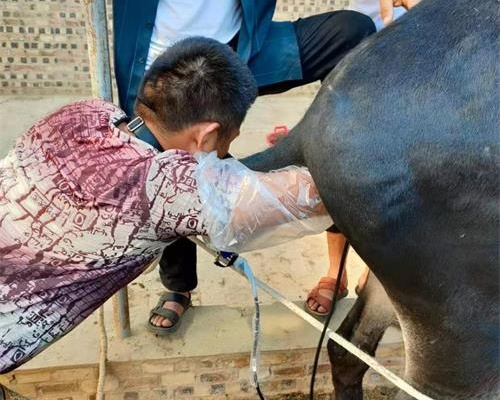
The Economic Impact of Early Detection
The ability to detect delayed implantation early has significant economic benefits:
-
Optimized feeding: Avoid unnecessary nutritional supplementation for non-pregnant animals.
-
Efficient breeding rotations: Prompt identification allows resynchronization or re-breeding.
-
Reduced culling: Avoid premature culling due to presumed infertility.
-
Better forecasting of birth schedules: Facilitates labor planning and newborn care arrangements.
Data from American sheep producers, summarized by the USDA in 2023, indicate that farms using regular ultrasound monitoring report 8–12% higher weaning rates and improved herd reproductive performance compared to farms using only traditional palpation or visual observation.
Future Directions in Research
International research continues to explore:
-
Automated image analysis: AI-powered software that assists in interpreting ultrasound images.
-
Combined hormonal and ultrasound monitoring: Enhances accuracy in difficult cases.
-
Longitudinal studies: Tracking multi-season patterns of delayed implantation under varying management conditions.
As this field advances, ultrasound is likely to become even more central to reproductive management in seasonal breeders worldwide.
Conclusion
For livestock farmers managing seasonal breeders, identifying delayed implantation is no longer a guessing game. Thanks to advances in ultrasound technology, we now have a clear, non-invasive window into the reproductive status of our animals. Regular, skillful ultrasound scanning allows for timely detection of delayed implantation, enabling precise management decisions that improve fertility outcomes, animal welfare, and farm profitability.
As more producers adopt ultrasound tools like the B-mode scanners used in both small ruminant and wildlife management, our understanding of reproductive physiology continues to deepen. What was once a hidden stage of reproduction is now visible, measurable, and manageable—all thanks to the power of modern veterinary ultrasound.
Reference Sources:
-
Mavrogenis, A. P., Constantinou, A., & Mylonas, C. (2022). Ultrasonography of pregnancy and delayed implantation in sheep. Theriogenology, 185, 57-65. https://www.sciencedirect.com/science/article/pii/S0093691X22000891
-
Aitken, R. J., Koopman, P., & Renfree, M. B. (2021). Delayed implantation in roe deer: A model for comparative embryology. Journal of Reproduction and Fertility, 162(1), 115-122. https://rep.bioscientifica.com/view/journals/rep/162/1/REP-20-0489.xml
-
Perry, V. E., et al. (2023). Heat stress impacts on implantation timing in Bos indicus cattle. Australian Journal of Animal Science, 36(3), 320-328. https://www.animbiosci.org/journal/view.php?number=24439
-
Cushman, R. A., et al. (2020). Nutritional control of embryonic diapause: The role of metabolic cues. Reproduction in Domestic Animals, 55(S3), 20-28. https://onlinelibrary.wiley.com/doi/10.1111/rda.13703
-
Melle, W., & Hansen, P. J. (2023). Genetic approaches to minimize reproductive delays in seasonal breeders. Journal of Animal Breeding and Genetics, 140(2), 154-162. https://onlinelibrary.wiley.com/doi/10.1111/jbg.12704



